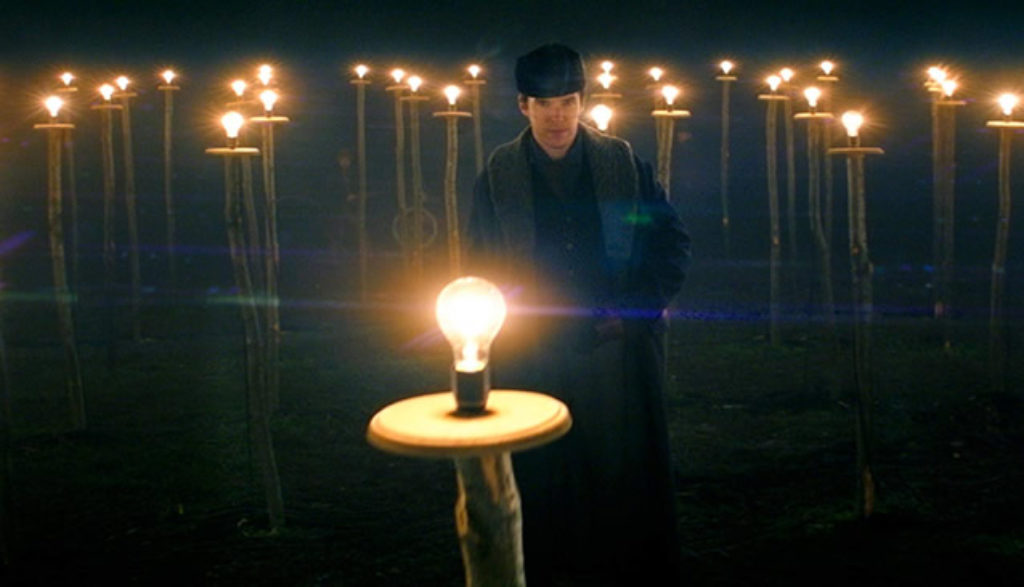
He was known as the “Wizard of Menlo Park.”
In the 19th century, inventor Thomas Alva Edison was probably as close to a pop-culture icon as you might find. And when a genius immigrant named Nikola Tesla landed on America’s shores, Edison was one of the first people he looked up.
For all of his star-power and skill at self-promotion, though, Edison wasn’t all that great with money. Much to his chagrin, he needed to turn to people like the wealthy banker J.P. Morgan to help finance his endeavors. But it was a necessary, glad-handing anguish in the early days of 1880, for Edison had pieced together something big. It was something that would change the face of history itself: He had finally solved the mystery of a long-lasting filament and created a useable “light bulb.”
With this precious invention, Edison dreamed of stretching copper wire across a square mile of Manhattan in order to light it. And in so doing, he strove to prove that he could eventually eliminate the need for gas lighting altogether and illuminate the world with electric light! The Manhattan experiment was an eye-opening, if very expensive, success.
Of course, Edison isn’t the only man with that power-packed dream. A forward-thinking industrialist named George Westinghouse understands the light bulb’s potential, too. In fact, he wants to join forces with Edison. But when the famous inventor snubs him, Westinghouse decides to push forward on his own. And he quickly makes a discovery that could reshape everything.
Instead of using direct electric current—a power source that is powerful but limited in its range—Westinghouse latches onto someone else’s idea called “alternating current” or AC. By stretching wires on poles above a city rather than burying cables underground, Westinghouse can set things up quickly and cheaply. And his approach can send the power produced from a single AC generator over miles, lighting up an entire city.
In the blink of an eye, the race to light the world is on. Or perhaps a better comparison would be to a war. The war for public opinion, public awareness and public acceptance is soon raging.
And like any war, the battlers don’t always play fair.
Edison tends to be a self-focused sort who invests more time and energy into his precious inventions than in those around him. But with the unexpected demise of his beloved wife, Mary, we see him shocked into shifting and spending more time with his children. In one scene after Mary’s funereal, Edison lies down to embrace both his children. He and his Morse code-loving son tap out messages of love to one another.
The government tempts Edison with large sums of money, wanting to use his genius for the country’s war efforts; but Edison refuses to build “machines that will kill.” (However, Edison betrays his own standards later on.)
For his part, Westinghouse is portrayed as a no-nonsense, civic-minded man concerned with leaving behind a “legacy of good.” He approaches Tesla and proposes a partnership. And even though the down-and-out Tesla is willing to sell his idea cheaply, Westinghouse makes him a more lucrative, long-term deal.
Both Edison and Westinghouse have loving relationships with their wives, women who steady and support their sometimes overextended and emotionally stressed husbands. Westinghouse and Edison both invest all they have, walking to the brink of bankruptcy, in pursuit of an upright goal.
Edison compares his excitement about finding a lasting lightbulb filament with the excitement one might feel if seeing “the Baby Jesus playing Mozart.”
Both Edison and Westinghouse tenderly kiss their wives.
When Edison starts feeling the pressure of losing more and more potential cities to Westinghouse’s less expensive and more efficient system of delivering power, he gathers reporters and lies about the deadly dangers of alternating current. He even stages the first electrocution (which he labels as a “Westinghouse”) and kills a horse with the current. The animal is killed offscreen, but we see men dragging its carcass away, partially wrapped in a tarp. We’re told that Edison stages several other public executions of animals to reinforce a negative impression of alternating current.
Edison also breaks his vow not to create any deadly devices when a man named Southwick approaches him about inventing a more humane means of human execution. (We’re shown a public hanging where the hooded criminal is pulled by the legs in order to break his neck. We don’t see the man’s face, but we hear his neck bones audibly snap.) Edison agrees to help create the first electric chair, but only if the device is attributed to Westinghouse and his AC power.
We later see in a newspaper report that the first electrocuted criminal suffered horribly and “died a brutal death.” That criminal was a man who murdered his wife with an axe. And though we’re not shown the bloody death, we do see the man spattered with blood as he turns himself into authorities.
Westinghouse’s engineer is killed in an electrical accident. We see a bright flash of light spark in a building, but the actual death is kept out of view.
When Mary Edison first shows signs of the brain disease that eventually claims her life, she collapses in an open field.
One misuse of Christ’s name, and God’s name is combined with “d–n” once. The word “d–n” is spit out a half-dozen times as well.
Characters down glasses of alcohol in several scenes. Edison and his secretary, Samuel, smoke cigars.
As the competition between Edison and Westinghouse becomes more heated, Westinghouse turns to thieves to steal evidence to use against Edison. (He admits his guilt in this matter to his wife later.)
Edison feels forced to compromise his ethics as well as his struggle with Westinghouse heats up. He lies about the dangers of alternating current, and he secretly helps develop the electric chair execution device to discredit his competitor’s technological advance. Financial machinations by investors rob two different men of rewards owed to them.
In 2017, The Current War made a festival appearance and was then quickly shut down, mostly thanks to its ill-timed connection to reeling Hollywood producer Harvey Weinstein. After being given another edit (the titular Director’s Cut) and being moved to a new distribution house, this orphaned pic with a star-studded cast has finally made its way to movie screens.
The intertwined drama of celebrity inventor Thomas Edison, civic-minded industrialist George Westinghouse and genius dreamer Nikola Tesla—and their competitive struggle to electrify the world—has been recounted, refashioned and reimagined many times before.
Generally, the tale is told with one member of the trio being identified as the true hero, and one or more of the other power players, uh, short-circuiting the others. That’s the way history and dramatized movies tend to dance. And to some extent, those pics with their bigger-than-life portrayals are probably each partially true. (The late 1800s weren’t known as a time of genius inventors and robber-barons for nothing.)
This film, however, takes a different historical tack. Each central character has his own strengths and virtues. His own flaws and vanities. His own genius and blind spots. The film sets us down in a well-crafted world of dark wood, bustles and mutton chops. And the tale is well-acted and immersive.
Is The Current War electrifying? No, not quite. But it’s got some nice star power. (Bad-um, tss!)
Apart from of a pair of unnecessary profanities and a few moments of violence that are more suggested than shown, The Current War: Director’s Cut is a solid period piece. It informs us about people who predestined all the powered things we enjoy today.
And if that makes you dreamily wonder about the celluloid magic flickering before your eyes and prompts you to look more deeply into the men and women behind it all, well, that’s a Hollywood plus in my book.


After spending more than two decades touring, directing, writing and producing for Christian theater and radio (most recently for Adventures in Odyssey, which he still contributes to), Bob joined the Plugged In staff to help us focus more heavily on video games. He is also one of our primary movie reviewers.